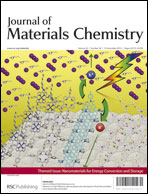Organic materials, such as paraffin wax, are sought as stable and environmentally friendly phase change materials (PCM) for thermal energy storage, but they suffer from low thermal conductivity which limits the rate at which thermal energy flows into and out of the material. A common method to improve the PCM thermal behavior is through loading with high thermal conductivity particulate fillers. However, the stability of these composites in the molten state is a concern as settling of the fillers will change the effective thermal conductivity. In this work, we investigate the stability of wax loaded with exfoliated graphite nanoplatelets either of 1 μm (xGnP-1) or 15 μm (xGnP-15) diameter. The effect of dispersants, oxidation of the wax, viscosity of the wax, mixing time, and hydrocarbon chain length on stability is reported. It was found that the addition of octadecylphosphonic acid (ODPA) is an effective dispersant for xGnP in paraffin and microcrystalline wax. In addition, mixing time, viscosity, and oxidation of the wax influence stability in the molten state. Overall, it was found that a mixing time of 24 hours for xGnP-15 along with ODPA mixed in a high viscosity, oxidized microcrystalline wax results in composite PCM systems with the greatest stability determined at 80 °C in the molten state.

You have access to this article
 Please wait while we load your content...
Something went wrong. Try again?
Please wait while we load your content...
Something went wrong. Try again?


 Please wait while we load your content...
Please wait while we load your content...